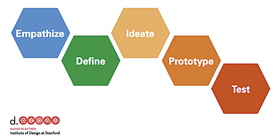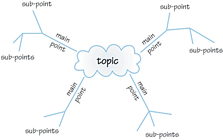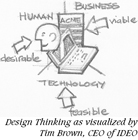
“A simple exercise to verify, realign and reinvent your business to embrace and nurture your client’s needs, wants, demands & desires.”
At this year’s TEDx Bend (April 26) some of the recurring themes explored included changing our perceptions and responding deliberately. For instance local coach and author, John O’Sullivan, revealed that seven out of 10 youth athletes quit their sports… the reason, constant critiques and criticism from parents and coaches. The solution, simply tell your children, “I love to watch you play.” According to O’Sullivan it turns out the reason children participate in sports is not to win, it is because they love to play and they have fun. Winning, does not even make the top 10.
Listening, I was reminded of one of the most effective management tools, “catch your employees doing something right.” A concept supported by former president Ronald Reagan, “Where there is genuine encouragement, people excel and succeed, not because they are told to but because they want to.” Sound advice.
This week’s first piece of advice is to enable, empower and encourage yourself and others; you will be rewarded with enthusiastic engagement.
The following is a weeklong exercise in perception and deliberate change, a design thinking staycation.
Before you begin, purchase a sketchbook, journal or Moleskine with blank pages and splurge on a nice pen.
During the exercise, you will assume the perspective of your customers, clients, consumers or end users. Rather than “working in your business, you will be working on your business.”
Design thinking is a transformative five-step process, which enables “Creative Destruction… the process whereby existing products, processes, ideas and businesses are replaced with better ones.”~ Joseph Schumpeter, economist (1942).

The Design School at Stanford has distilled this functional model to define the process:
DAY ONE – EMPATHY
USER EXPERIENCE
For an entire day, you will shed your title as owner, founder, CEO or employee and embrace the viewpoint of your clients, consumers, customers, guests or end users. You will rid yourselves of any preconceived ingrained knowledge of your business and will instead experience it for, perhaps the first time, as neophyte.
Throughout the day shed your biases and preconceptions of what your business is and instead consider your client’s needs, wants, demands and desires. What is your customer’s experience of your business?
Begin by having a friend or ally call your business while you listen in on speakerphone. Next, have them visit your web site, watch as they navigate the site. Be silent and listen while they narrate their experience. Take notes.
If you have a physical location, visit and observe. How does the exterior look, from up the street, down the street, from the back, the front? Enter the building; limit yourself to the public spaces. Is it clean, neat and tidy, organized, intuitive, deliberate? Return throughout the day and discretely watch as others experience your business.
If your business is B2B, spend the day with your sales team or rep, visiting clients while you listen and observe. If yours is a virtual business, visit every portal, social media site, blog… experience it as a user.
You are looking for “touch points,” any contact point, location or event where your business interacts with a customer.
Reflect on what felt right, did anything feel wrong? Did you find anything unexpected? Was anything missing from the experience?
DAY TWO – DEFINE
This step is offsite, do not go anywhere near your business. Turn off your cell phone. Do not check your email. Do not use a computer.
Spend the day reflecting on yesterday; relive it in your mind. Isolate key moments, events and steps in the process. Create a flow chart of a typical user experience isolating each step.
Next, for each step draw a small circle in the middle of a blank page and write a one-word description. Repeat with one page for each step.
Return to the first step and for each in turn, using spokes emanating from the center draw additional bubbles adding detail of the sub steps for each step in the process.
The result should look something like this, a mind-map: 
DAY THREE – IDEATE
ASSEMBLE THE TEAM
Engaging the team in the process is crucial to the forthcoming change. Their participation empowers them and gives them voice. From experience, most of the best ideas come directly from the front-line.
One of the most sought after product development firms in the world, IDEO uses brainstorming to capture a universe of possible solutions and potential improvements.
They have established the following seven guidelines for effective brainstorming:
1. Defer judgment
2. Encourage wild ideas
3. Build on the ideas of others
4. Stay focused on the topic
5. One conversation at a time
6. Be visual
7. Go for quantity
Spend 60 minutes with your team brainstorming ideas for improving each of the previous steps from the definition phase.
DAY FOUR – PROTOTYPE SOLUTIONS
Deconstruct the findings from the previous steps and begin to reconstruct the processes. Streamline the processes. Add something, eliminate something, realign the workflow; envision what could be and what should be.
Remain steadfast to the user, this is not your solution, it is theirs.
Imagine your audience using the good, service or experience. How will it feel for them?
Focus on delight.

DAY FIVE – TEST
In this step it is important to caution against radical change (unless you deem it necessary), incremental change is often less disruptive to your organization. There are two benefits to incremental change less resistance internally and less risk in alienating existing customers.
Inherent to this step is feedback, as you change, continue to observe your clients reactions.
Solicit their feedback, what works what does not?
In Japan, businesses practice Kaizen, “continuous improvement;” continuous change, constant incremental steps evolving towards an ideal.
Emulate them.
Eric Anthony Spieth is a member of the business faculty at Central Oregon Community College. He received his MBA from Humboldt State University and a Bachelor’s in Fine Arts specializing in Digital Film and Communication Design from California State University, Channel Islands. He is also team lead for the COCC | Center for Entrepreneurial Excellence and Design | CEED, an entrepreneurship program focused on and for the community and students interested and committed to taking an idea from concept to launch. The CEED program will relocate from the Bend Campus to the new Redmond Technology Education Center in Fall 2014. Registration begins May 19 for Eric’s first cohort in New Venture Creation, offered in the new Redmond facility.





